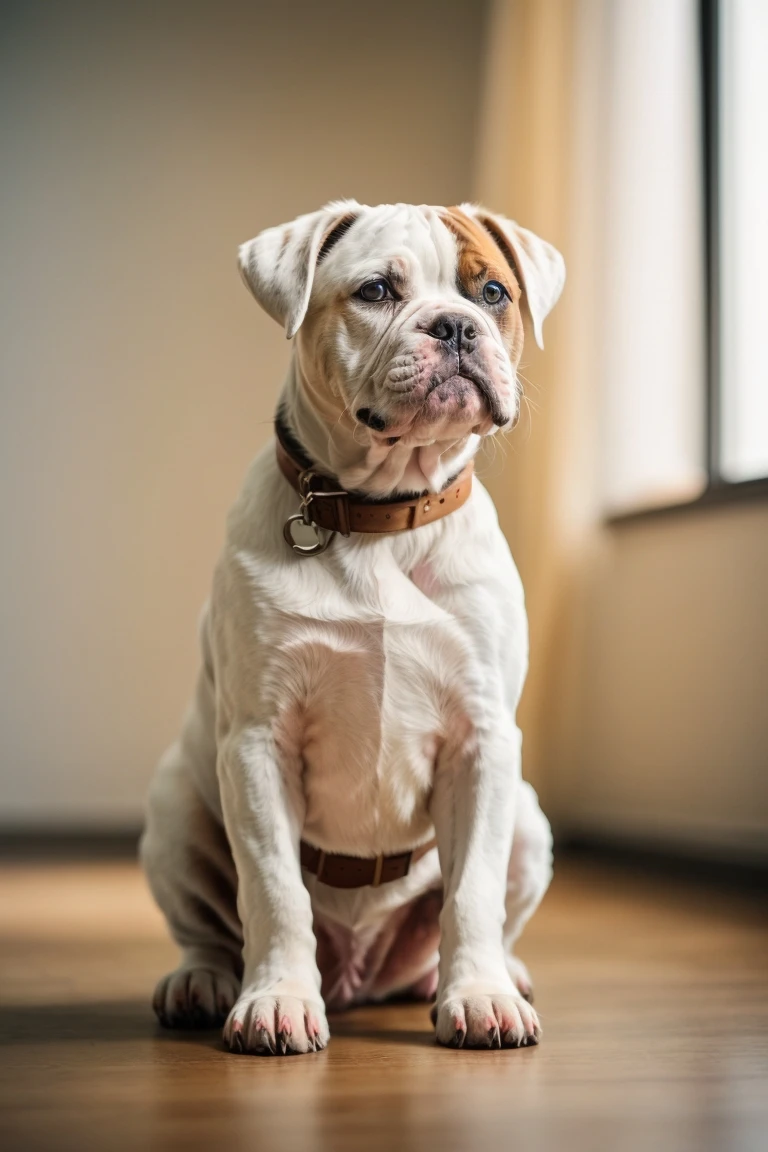Training Tips for Your American Bulldog

The American Bulldog is a powerful, muscular breed that needs proper training and socialization from a young age. With the right techniques and commitment, you can shape your American Bulldog into an obedient and well-mannered companion. This guide covers everything you need to know about training this athletic breed.
Overview of American Bulldogs
Before diving into training, let's first review some key facts about American Bulldogs:
- Height: 20-28 inches
- Weight: 60-120 lbs
- Coat: Short, dense
- Colors: Solid white, white with patches, brindle, fawn, tan
- Temperament: Confident, steady, strong-willed
American Bulldogs need extensive socialization and structure from puppyhood. Early training helps channel their strength, energy, and determination into positive outlets. Owners need to demonstrate calm-assertive leadership.
Equipment You'll Need
Having the proper supplies will make training your American Bulldog easier:
- Collar or harness- For control. Use front-clip options to deter pulling. Introduce gradually.
- Leash - Important for safety and teaching loose leash walking. Have 6 ft and 20-30 ft long lines.
- ID tag - Custom engraved tags should include your contact info. Essential if your dog gets lost.
- Treats - Healthy training treats to use as positive reinforcement. Cut into small pieces.
- Toys - Interactive puzzle toys and rubber chew toys provide mental and physical stimulation.
- Crate - Crucial for housetraining and preventing destructive chewing. Should just fit the dog.
- Brush - Helps remove loose hair during grooming handling exercises.
Training from Puppyhood
American Bulldog puppies are extremely energetic, mouthy, and often test boundaries. Start training as soon as you bring your puppy home:
Housetraining
- Take outside frequently and reward potties outside immediately with treats. Limit access when unsupervised.
Crate Training
- Make crate comfortable with bedding and toys. Feed meals inside and give treats for voluntarily entering. Close door briefly while you are home.
Bite Inhibition
- Say "ouch!" and redirect to a toy when puppy mouths too hard. Praise gentle play.
Socialization
- Safely expose puppy to new people, places, sounds, and handling from a young age. Make experiences positive.
Basic Cues
- Focus on positive reinforcement training for commands like: sit, stay, come, down, leave it, drop it. Keep sessions short and rewarding.
Training Adult American Bulldogs
For adult American Bulldogs who lack training, you may need to start from the basics:
Establish Leadership
- Set rules and structure with calm confidence. Don't let poor behaviors slide. Redirect unwanted behaviors into productive outlets.
Provide Ample Exercise
- Well-exercised dogs focus better during training. Walks, play time, and enrichment toys help drain energy.
Use Positive Reinforcement
- Food rewards and praise get better results than punishment. Build your dog's motivation to work and obey.
Respect Powerful Bite
- Never play tug of war. Discourage mouthing. Trade toys for hands. Use force-free techniques only.
Socialize Carefully
- Monitor interactions with strangers, children, and other animals. Avoid dog parks. Muzzle if needed.
Utilize Professionals
- Group classes provide structure and socialization. Trainers can address unique challenges like dog aggression.
Key Training Commands
All American Bulldogs should master basic obedience cues. Prioritize teaching:
Sit - Foundation behavior for impulse control. Enforce sit for greetings, before exits, etc.
Stay - Prevents bolting out doors. Work up to long durations.
Down - Calms dog when overexcited. Essential skill.
Come - Critical recall command. Generously reward speedy responses. Practice in distraction-free settings first.
Heel - Loose leash walking without pulling using positive reinforcement.
Leave It - Prevents hazards like food or dead animals on ground from being investigated.
Drop It - Instructs your dog to release objects from their mouth to you. Prevents resource guarding.
Fetch - Channels their strong retrieve drive into healthy play. Reinforce bringing back and releasing toys.
Train these commands using reward-based methods, especially with powerful breeds like American Bulldogs. Avoid dominance techniques.
Common Training Challenges
American Bulldogs can present some unique training challenges including:
Stubbornness - Persist with positive training. Use high-value treats for motivation. Keep sessions short, upbeat, and engaging.
Mouthiness - Say "ouch!" loudly and ignore dog anytime teeth touch skin. Redirect to chew toys. Praise gentle play.
Jumping Up - Turn away, fold arms, and avoid eye contact when dog jumps. Reward four paw downs.
Guarding Behavior - Never take items by force. Trade item for treat. Teach "drop it" command. Praise releases.
Chasing/Nipping at Heels - Carry toy to redirect energy. Practice attention heeling exercises using food lures.
Pulling on Leash - Use front-clip harness and stop movement when leash tight. Reward loose leash walking.
Dog Aggression - Avoid dog parks. Allow greetings on neutral territory on-leash. Consult trainer.
Troubleshooting Common Issues
If you encounter problems when training, here are some troubleshooting tips:
Issue: Dog pulls on leash constantly.
Solution: Get front-clip harness. Hold leash close to your body and change directions when pulling. Reward steps at your side.
Issue: Dog seems fearful of new people or environments.
Solution: Introduce new things slowly at a distance. Associate strangers and environments with treats. Go at dog's pace.
Issue: Dog refuses treats and won't focus during training.
Solution: Try a higher value reward like chicken or hot dogs. Train before meals, not after. Practice attention exercises in distraction-free settings first.
Issue: Dog won't potty outside on leash but will in house.
Solution: Stand silently with dog on leash for 5-10 minutes. Reward immediate potty with high-value treats and praise. Confine or crate when unsupervised.
Issue: Dog regresses on training already mastered.
Solution: Evaluate whether commands or hand signals changed. Proof the behaviors again through repetition and generous rewards. Keep training sessions frequent.
Conclusion
American Bulldogs are powerful dogs that require extensive socialization, training, leadership, and daily exercise starting from puppyhood. Utilize force-free positive reinforcement techniques to develop a well-trained and mentally stimulated dog. Seek professional help from trainers if needed. Put in the time, effort, consistency and patience, and you'll be rewarded with a loyal companion.